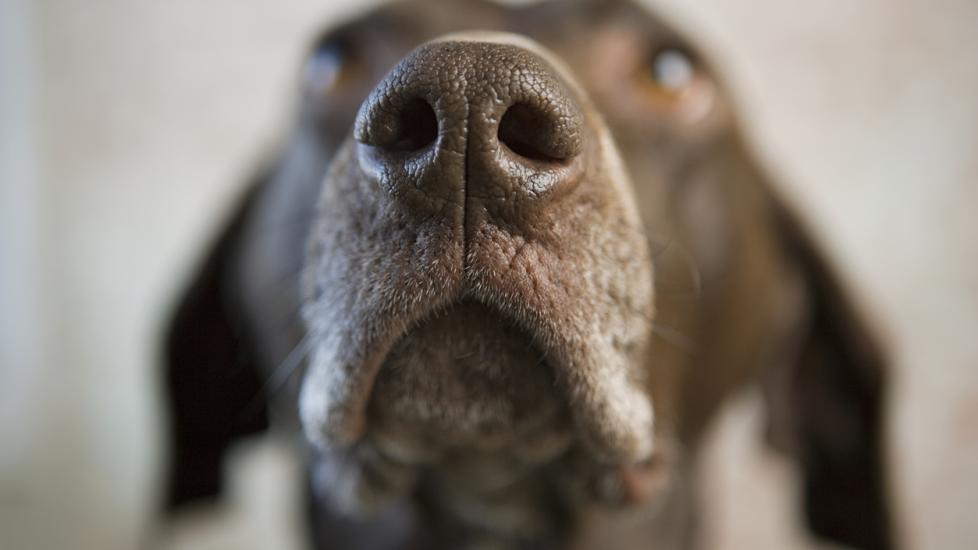Title: Understanding and Addressing Nasal Dermatoses in Canine Companions
Introduction:
In the realm of canine health, the delicate skin of a dog’s nose often serves as an indicator of their overall well-being. However, this area is not immune to dermatological issues that may range from minor irritations to more severe conditions affecting both quality of life and appearance. Known collectively as nasal dermatoses, these problems can be distressing for pet owners and uncomfortable or painful for dogs themselves. It is crucial to recognize the various forms these disorders take and understand how best to address them. This article aims to provide a comprehensive guide to recognizing, treating, and preventing common nasal dermatoses in our beloved canine companions.
Understanding Dog Nose Skin Issues:
Dogs’ noses are exposed to a multitude of environmental factors that can lead to irritation and inflammation. Some of the most prevalent causes of nasal dermatoses include:
- Allergies: Environmental allergens such as pollen, dust mites, mold spores, and flea bites can trigger allergic reactions on sensitive nose skin.
- Skin Fold Infections: Brachycephalic breeds with deep wrinkles around the nostrils are prone to moisture buildup and subsequent bacterial infections.
- Cancer: Squamous cell carcinoma is a common form of cancer affecting the nasal planum, particularly in outdoor or older dogs.
- Lick Granulomas: Oral habits like excessive licking or chewing can create sores and scarring on the nose.
- Trauma: Direct trauma from impact, sunburn, or chemical exposure can cause acute injuries to the nose.
- Infectious Agents: Bacterial, viral, or fungal agents can invade compromised skin barriers, leading to infection.
- Immune System Disorders: Autoimmune diseases like pemphigus foliaceous or discoid lupus erythematosus can affect the nose.
Recognizing Signs and Symptoms:
Owners should watch for changes in their dog’s nose that might signal a problem. These could include redness, scaling, crusting, ulceration, discharge, bleeding, pain upon touch, or altered pigmentation. Early detection allows for prompt intervention and management.
Treatment Options:
The treatment approach will depend on the underlying cause but generally includes the following steps:
- Diagnosis: A veterinarian will perform a thorough examination, possibly including blood tests, skin scrapings, biopsies, and imaging to determine the nature of the condition.
- Medical Management: Topical creams, ointments, antibiotics, steroids, or immunomodulators may be prescribed to control inflammation and promote healing.
- Environmental Control: Allergen avoidance strategies, regular grooming to prevent skin fold infections, and protective measures against UV rays can help maintain healthy skin.
- Lifestyle Modifications: Dietary adjustments, increased hydration, and exercise routines tailored to individual needs can contribute to better skin health.
- Supportive Care: Keeping the affected area clean and dry, using humidifiers during colder months, and providing soft bedding can aid recovery.
Prevention Strategies:
To reduce the likelihood of nasal dermatoses developing, consider implementing preventive measures such as:
- Regularly cleaning folds around the nose with gentle wipes designed for canine use.
- Using allergen-reducing techniques indoors and limiting time spent outdoors when allergy seasons peak.
- Applying pet-safe sunscreen to areas susceptible to sunburn, especially on light-colored or thin-skinned noses.
- Providing a balanced diet rich in essential fatty acids known to support skin health.
- Monitoring your dog’s environment for potential triggers and taking appropriate action to mitigate risks.
Conclusion:
By understanding the diverse array of nasal dermatoses that can affect dogs, we empower ourselves to recognize early signs, seek veterinary care promptly, and implement effective prevention methods. Through attentive care and collaboration with our pets’ healthcare providers, we can ensure our four-legged friends enjoy comfortable lives with clear evidence of good health—even on their most prominent feature, their noses!
